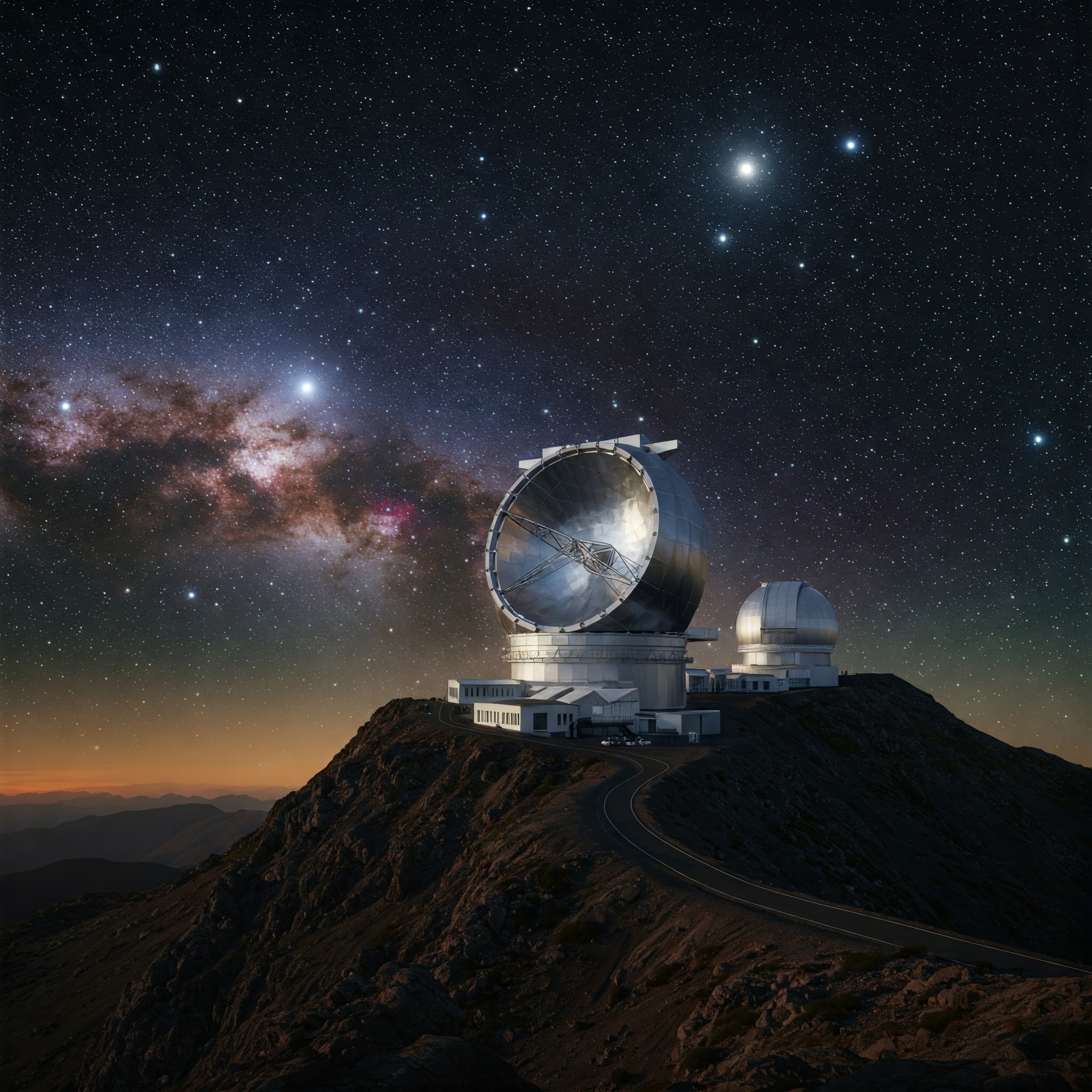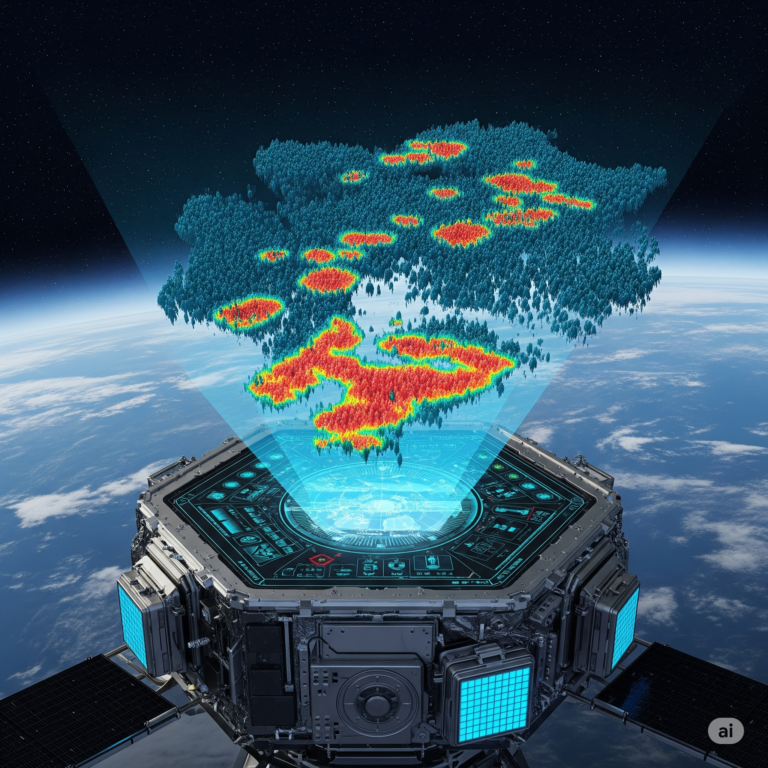The quest to understand the universe has taken humanity on a fascinating journey through space and time. From the first telescopes that opened our eyes to distant stars to the Hubble Space Telescope’s breathtaking images of galaxies far beyond our reach, our understanding of the cosmos has expanded dramatically. However, a new marvel in astronomy is poised to push the boundaries of this exploration even further. The Extremely Large Telescope (ELT), currently under construction, promises to be the largest optical and infrared telescope ever built. Once operational, it will allow astronomers to study exoplanets, black holes, and the earliest galaxies in ways previously unimaginable. This article delves into what the ELT is, its groundbreaking capabilities, and how it will transform our understanding of the universe.
What is the Extremely Large Telescope (ELT)?
The Extremely Large Telescope (ELT) is a project by the European Southern Observatory (ESO) and is currently being built at the Paranal Observatory in Chile. Once completed, it will have a main mirror that spans 39 meters in diameter—almost three times the size of the next largest optical telescope, the Gran Telescopio Canarias. The ELT will be the largest optical and infrared telescope in the world, offering unprecedented resolution and sensitivity in astronomical observations.
Construction of the ELT
The ELT’s construction began in 2014 and is expected to be completed by 2027. The telescope will be housed in a dome that measures 85 meters in diameter, with the telescope’s massive mirror composed of 798 individual segments that work in unison to form a single reflective surface. The telescope will be able to capture light from distant stars, galaxies, and other celestial bodies with exceptional detail, thanks to its massive size and advanced adaptive optics.
Why is the ELT a Game-Changer in Astronomy?
Size Matters: The ELT’s Massive Mirror
The ELT’s primary mirror will measure 39 meters across, a significant leap over its predecessors. This larger size provides several key advantages in astronomical observations:
- Higher Resolution: The larger the mirror, the better the resolution. The ELT will provide images 15 times sharper than the Hubble Space Telescope, allowing astronomers to observe distant objects with unparalleled clarity.
- Greater Light-Gathering Power: The ELT will collect much more light than smaller telescopes, enabling it to detect faint objects like distant exoplanets and galaxies. This means that even the most distant and faint astronomical phenomena will be visible with this telescope.
Adaptive Optics: Overcoming the Distortion of the Atmosphere
Earth’s atmosphere often distorts the light from celestial objects, which is why ground-based telescopes typically have blurry images. The ELT will use advanced adaptive optics to correct for this distortion in real-time, producing clearer, sharper images of space objects.
The adaptive optics system involves thousands of actuators that adjust the shape of the telescope’s mirror to counteract the effects of atmospheric turbulence. This means that even though the ELT is on the ground, it will be able to produce images as sharp as those taken from space-based telescopes.
Key Scientific Goals of the ELT
The ELT will open up new possibilities in several areas of astronomy, including the study of exoplanets, black holes, dark matter, and the origins of the universe. Its advanced capabilities will allow astronomers to investigate phenomena with a level of detail never before possible.
Exoplanets: Searching for Earth-like Worlds
One of the most exciting areas of research for the ELT will be the study of exoplanets—planets that orbit stars outside of our solar system. The ELT’s sensitivity and resolution will allow it to directly observe exoplanets and study their atmospheres, composition, and potential for habitability.
The ELT will also help astronomers detect smaller, Earth-like exoplanets in the habitable zone of stars, where liquid water could exist. By studying the atmospheres of these planets, scientists hope to find signs of life or conditions that could support life.
Black Holes: Unveiling the Mysteries of the Dark Side
Black holes are some of the most enigmatic and extreme objects in the universe. The ELT will allow astronomers to study the behavior of material near black holes, including the accretion disk—the rotating mass of gas and dust that swirls around a black hole before being consumed.
By observing the movement of stars and gas around black holes, the ELT will help us understand their formation, growth, and role in the evolution of galaxies. The telescope will also be able to capture the event horizon of supermassive black holes, shedding light on their complex behavior.
The Early Universe: Looking Back in Time
One of the most challenging aspects of studying the universe is observing the earliest galaxies, which were formed billions of years ago. The ELT will be able to capture the faint light from these galaxies and analyze their composition, structure, and evolution.
By looking further back in time than ever before, the ELT will help astronomers study the formation of the first stars and galaxies, providing insights into how the universe evolved from the Big Bang to its current state. This research will deepen our understanding of cosmic history and the origins of the universe itself.
The Technology Behind the ELT
4.1 The Mirror: Precision and Innovation
The ELT’s mirror is composed of 798 hexagonal segments that work together to form a single, highly precise reflective surface. Each of these segments is made of a special glass material and is coated with a thin layer of reflective metal. The mirror is also equipped with an advanced active control system that ensures it maintains its shape and alignment during observations.
The precision of the ELT’s mirror is critical to its ability to collect light from distant objects. It can be adjusted in real-time to compensate for any distortions caused by the atmosphere, allowing for the sharpest possible images.
Instruments: Cutting-Edge Technology for Detailed Observations
The ELT will be equipped with several powerful instruments designed to capture different wavelengths of light, from optical to infrared. These instruments will allow astronomers to study celestial objects in unprecedented detail.
For example, the “HARMONI” instrument will be used for imaging and spectroscopic observations, enabling astronomers to study the chemical composition and motion of distant objects. The “METIS” instrument, on the other hand, will be optimized for studying the infrared spectrum, allowing the telescope to peer through dust clouds and observe hidden objects.
Adaptive Optics: Perfecting the View
The ELT’s adaptive optics system will include a laser guide star to measure atmospheric distortion. Using this system, the telescope will be able to correct for turbulence caused by the Earth’s atmosphere in real-time, producing crystal-clear images. This will be particularly important for studying faint or distant objects, which can be difficult to observe with ground-based telescopes due to atmospheric interference.
The ELT’s Impact on the Future of Astronomy
Revolutionizing Exoplanet Discovery
With its ability to detect Earth-like exoplanets and analyze their atmospheres, the ELT will play a key role in the search for extraterrestrial life. By studying the conditions on distant planets, scientists will be able to assess their potential habitability and look for signs of life, bringing us one step closer to answering one of the greatest questions of all: Are we alone in the universe?
Deepening Our Understanding of Dark Matter and Dark Energy
Dark matter and dark energy are two of the biggest mysteries in modern physics. While we can’t directly observe them, their effects on the universe are profound. The ELT’s powerful observational tools will allow astronomers to study the gravitational effects of dark matter and dark energy, helping to unlock the secrets of these invisible forces.
Exploring the Birth of the Universe
The ELT’s ability to observe the earliest galaxies will give us a window into the birth of the universe itself. By studying the first few hundred million years after the Big Bang, scientists will be able to learn more about the formation of stars, galaxies, and the conditions that led to the development of life as we know it.
Conclusion
The Extremely Large Telescope (ELT) represents a monumental leap forward in our quest to understand the universe. With its unmatched clarity, sensitivity, and technological innovation, the ELT will open new frontiers in astronomy, enabling us to study exoplanets, black holes, the early universe, and more with unprecedented detail. As this telescope begins its operations, it will undoubtedly lead to groundbreaking discoveries that reshape our understanding of the cosmos and our place within it. The ELT is not just a tool; it is the key to unlocking the deepest mysteries of the universe.









+ There are no comments
Add yours